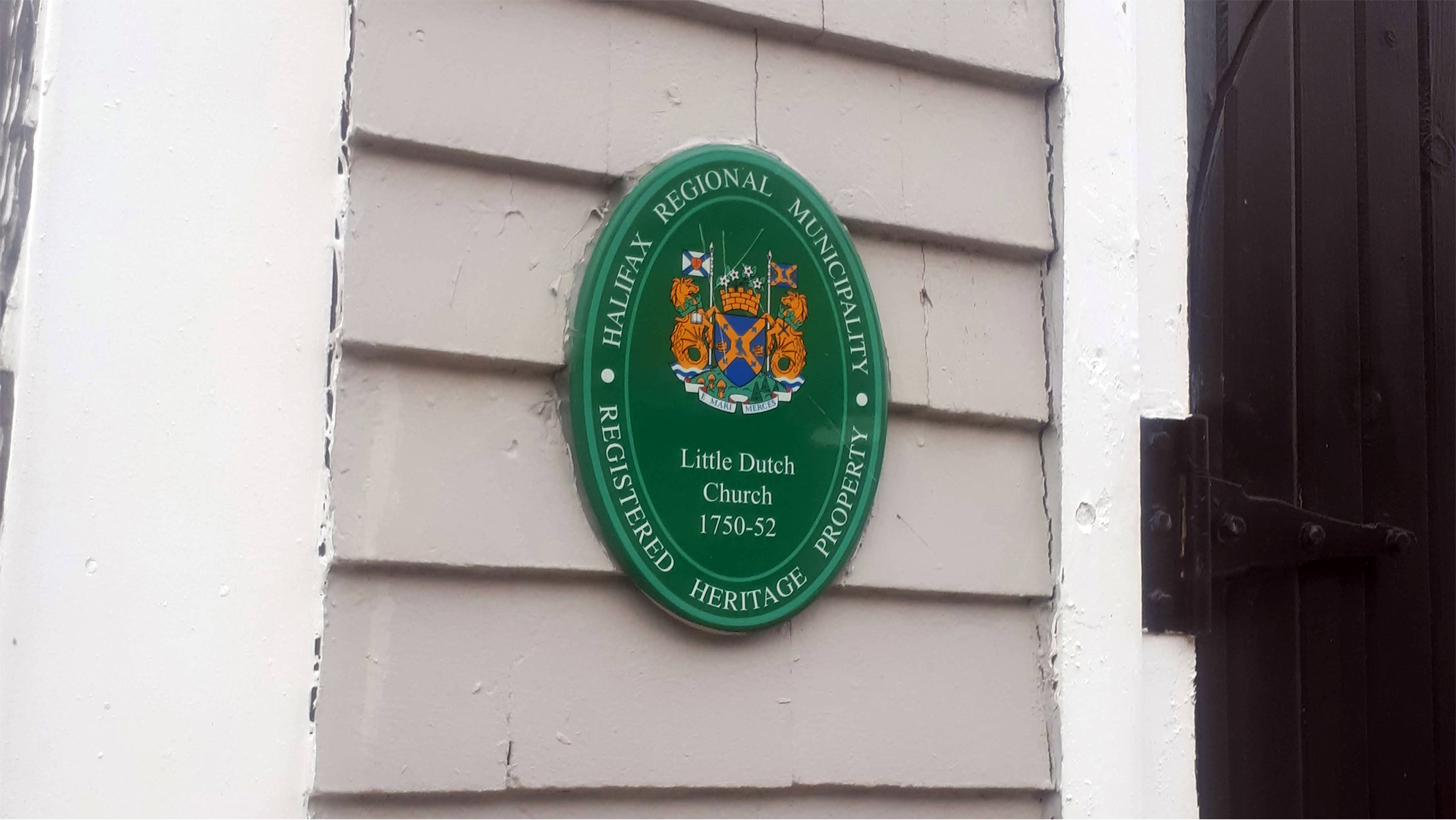How does Halifax designate heritage property?
The process is far from perfect, according to one HRM councillor

caption
The Little Dutch Church is the second oldest building in Halifax, and is a registered municipal heritage property.The owners of 11 properties will have the chance to address Halifax regional council before it decides whether or not to register their buildings as heritage properties.
Halifax’s heritage advisory committee evaluated the 11 potential heritage properties on Jan. 30, 2020. The committee forwarded the properties to council with the recommendation they all be registered as municipal heritage properties.
The decisions will be made between now and May 30, unless council decides to reject a property for heritage registration before then.
Why are they considering these properties now?
On May 14, 2019, council decided to evaluate Halifax’s existing potential heritage properties. These are properties the municipality believes might hold heritage value. This decision was in response to a December 2018 report saying approximately 35 per cent of potential heritage properties in the downtown Halifax area had been demolished since 2009.
These properties are evaluated by the heritage advisory committee. Properties deemed by council to have heritage value are registered as municipal heritage properties. This registration affords these properties a certain level of protection, and sets out rules for what can and can not be done with them.
How does the heritage advisory committee evaluate these properties?
The heritage advisory committee evaluates the heritage value of each property by scoring it out of 100 based on six criteria: age, historical or architectural importance, architectural merit, architectural integrity, the significance of the architect or builder, and its relationship to the surrounding area.
Properties scoring at least 50 points are forwarded to council for consideration. Some of the criteria can hold more weight than others.
The age of the property can account for up to 25 points out of 100. Scoring the age of a property is the most straightforward of the criteria, with 25 points given to properties constructed between 1749-1785, 20 points to properties constructed between 1786-1830, and so on.
The committee awards points for historical or architectural importance for properties related to important occasions, institutions, people, and groups, or for being architecturally representative of a particular period in history, up to a maximum of 20 points. This criterion is more open to interpretation, as there may be debate over how intimately related a property is to a given occasion or person, or how reflective its style is of a given period.
Scoring of architectural merit is based on two factors, scoring up to 10 points each: the methods and techniques used in its construction and the style of architecture. Rare or early examples of methods, techniques, and styles tend to score higher. Scoring for architectural merit is also left open to interpretation, as there may be debate or uncertainty over how rare a given method, technique, or style is.
Scoring for architectural integrity takes changes to the original property into consideration. If the property remains largely unchanged from its original state it can score up to 15 points, but if the original architecture has been severely altered or compromised it may score 0 points. This again leaves room for debate over what those terms really mean.
Scoring for the significance of the architect or builder is based on whether the property is representative of the work of an architect or builder of significance, with more points awarded for properties representing the work of a more significant figure. The work of an architect or builder of national significance can earn up to 10 points, while the work of an architect or builder of little or no significance might earn 0 points. How significant a figure is, or how representative of their work the property is, is left up to the committee.
Scoring for the property’s relationship to the surrounding area is scored out of 10. If a property complements the surrounding properties and contributes to the heritage character of the surrounding area it can score up to 10 points, and score fewer points the less compatible it is with the surrounding area. To what degree the property is compatible with the area is up to the committee.
What do people think?
Andrew Murphy, president of the Heritage Trust of Nova Scotia, believes there is an issue with the way potential heritage properties are evaluated.
Murphy said efforts to register the United Memorial Church failed because of its age, despite its ties to the Halifax Explosion.
“The heritage [committee] tried to give it double points for historical significance,” Murphy said.
“But council turned that down, and that really pointed out one of the problems with our system. We need to be able to score extra points for places that truly have high historic value.”
Murphy is concerned some important buildings can be overlooked based on the current evaluation criteria. Murphy gave the example of the building which served as the Canadian command centre for the Battle of the Atlantic in the Second World War, which once stood at the corner of South and Barrington Streets.
“So this was a fairly nondescript building built after the First World War. We had that tremendously historic place, and 22, 23 years ago, we wrecked it down,” Murphy said.
The allies’ command centre in the Western Approaches museum in Liverpool, England, now receives more than 1.5 million visitors each year.
“I would maintain that building still wouldn’t be safe today. It’s not old enough. It had no architectural merit. It would not have hit 50 [points].”

caption
Andrew Murphy believes the evaluation criteria place too much weight on age, and not enough on historical significance.Coun. Sam Austin agreed. Austin said the evaluation criteria can be very black and white.
“We do have an outstanding motion to review that criteria,” Austin said.
“It basically says if you’re a kind of Victorian architecture, you’re worth more than if you’re from a from a new architectural movement, even if it’s the standard example of that movement in town.”
What happens then?
When a property gets more than 50 heritage points and the committee recommends council register it as a heritage property, a letter is sent to the owners of the property to inform them of the process.
The letter explains why their property is being considered for designation as a heritage property, and notes no demolition or substantial alterations can be made to the appearance of the property for 120 days, unless council decides to refuse the property for heritage registration sooner.
Council sets a date for a hearing before it makes its decision. At this hearing, the property owners have the chance to speak before a decision is made.
Austin said there are few cases where council would reject a property the committee recommended for heritage registration.
“There is a debate always at council, particularly if a registration is a third-party registration where it’s not the building owner that has applied to register their building, because you’re then talking about imposing our registration on somebody’s property,” he said.
“If the property owner doesn’t object, why wouldn’t council follow the recommendation that’s given?”
If council decides to register the property as heritage, then no demolition or substantial alterations to the appearance may be made to the property unless an application for permission is submitted to council in writing, and council approves the application.
If the application is refused, the owners are able to either demolish the property or make the change three years after the refusal. They only have one year to do so. This is permitted by the controversial Section 18 of the Heritage Property Act of Nova Scotia.
Austin said it’s not a big issue in the rest of the province, but Halifax is experiencing a lot of growth, which means there are heritage buildings on expensive properties.
“So you can have cases where there’s a development and there’s a real incentive to tear it down because property values are such that you can get so much more … money out of the property if that heritage building was potentially gone,” he said.
If a property scores less than 50 per cent at the committee’s evaluation stage, the property is not forwarded to the council with a recommendation, and the process ends.
What happens to heritage properties?
Owners still have a significant amount of control over what they can do with a heritage property they own under Section 18.
The municipal government may also offer financial assistance for restoration or renovation of a heritage property. The heritage advisory committee can advise council on any matters related to heritage properties.
“If you look at Barrington Street, which is the oldest heritage district we have, virtually every building along the street has been renovated,” said Austin.
“A part of that is there’s been a municipal incentive program that’s provided grants to property owners.”
The Heritage Incentives Program provides dollar-for-dollar grants of up to $15,000 for residential properties and $25,000 for commercial properties to complete exterior conservation work on the property. To be eligible, the property must be privately-owned and be a registered municipal heritage property. Work can’t begin prior to application for the grant.
What comes next?
The committee is set to evaluate dozens more potential heritage properties in the coming months. Austin said these need to be evaluated sooner rather than later.
“A third of them have been lost to redevelopment [since 2009]. So if we don’t assess the rest of them, then presumably at the same rate they will all eventually be gone,” he said.
Austin said there are some things about the process he’d like to change. He said he and Coun. Lorelei Nicoll reached out to the province to see if it would be possible to alter Section 18’s three-year rule.
“That needs to go,” he said.
“HRM has asked for changes to that in the past. It hasn’t gone anywhere. It’s not our legislation and the province needs to change it.”
